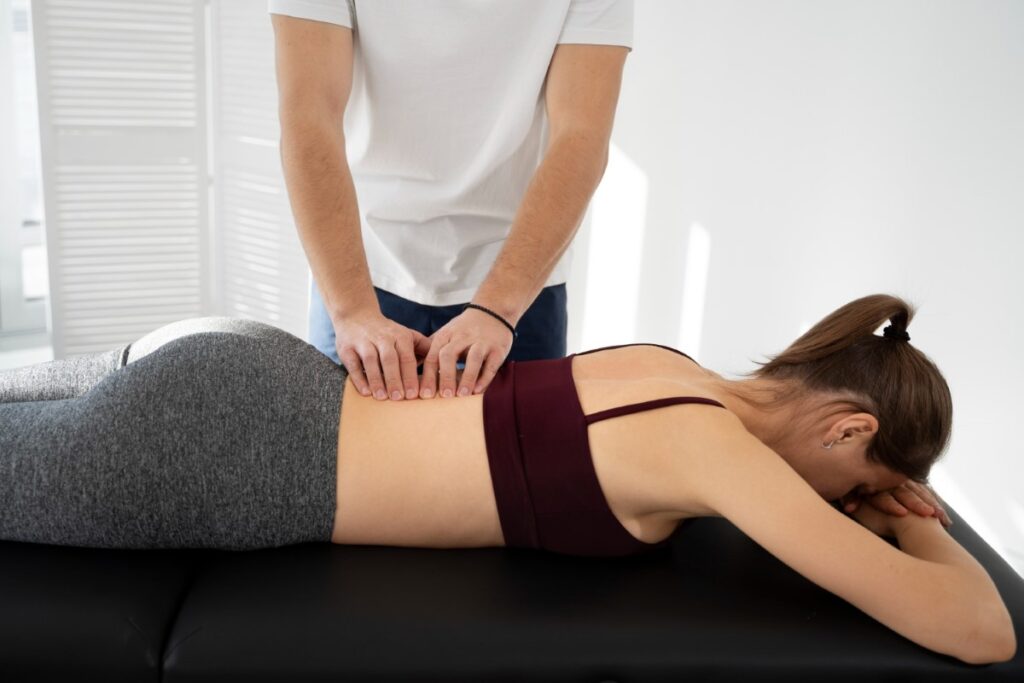Introduction
Low back pain is a prevalent and often debilitating condition that affects millions of people worldwide. The lower back, or lumbar region, is a critical area that supports the upper body and facilitates various movements. Consequently, it is prone to injuries, strains, and degenerative conditions that can cause pain and discomfort. Low back pain can significantly impact an individual’s quality of life, hindering mobility, work productivity, and overall well-being. Fortunately, Physical Therapy (PT) has emerged as a valuable and effective approach to manage and alleviate low back pain. In this comprehensive essay, we will explore the numerous benefits of Physical Therapy for low back pain, highlighting how it aids in pain relief, improves flexibility and strength, prevents recurrence, and promotes overall back health.
Understanding Low Back Pain and its Causes
Low back pain can originate from various structures in the lumbar region, including the muscles, ligaments, discs, and vertebrae. The causes of low back pain are diverse and may include:
- Muscle Strain: Overuse, improper lifting techniques, or sudden movements can lead to strained muscles in the lower back, causing pain and discomfort.
- Disc Herniation: The intervertebral discs between the vertebrae can herniate or bulge, compressing nearby nerves and resulting in low back pain.
- Spinal Stenosis: This condition involves the narrowing of the spinal canal, putting pressure on the spinal cord and nerves, leading to pain and mobility issues.
- Osteoarthritis: Degeneration of the cartilage in the lumbar spine can cause osteoarthritis, resulting in inflammation and pain.
- Sciatica: Compression or irritation of the sciatic nerve can cause radiating pain, numbness, and tingling sensations in the lower back and down the legs.
- Spondylolisthesis: This condition occurs when one vertebra slips forward over another, leading to instability and low back pain.
Physical Therapy for Low Back Pain: The Benefits

Precise Evaluation and Diagnosis
One of the primary benefits of seeking Physical Therapy for low back pain is the precise evaluation and accurate diagnosis provided by a qualified Physical Therapist. Through a comprehensive assessment, including medical history, physical examination, and possibly imaging tests, the PT can identify the underlying causes of low back pain and tailor a targeted treatment plan accordingly.
Pain Relief and Inflammation Reduction
Physical Therapists use various techniques to provide pain relief and reduce inflammation in the lower back. Manual therapy, such as joint mobilization and soft tissue mobilization, helps alleviate pain, restore mobility, and promote healing.
Customized Exercise Programs
Physical Therapists develop individualized exercise programs that target the specific needs of each patient. These programs include stretching exercises to improve flexibility, strengthening exercises to stabilize the lower back, and core strengthening exercises to enhance support for the spine.
Posture and Body Mechanics Correction
Poor posture and improper body mechanics can contribute to low back pain. Physical Therapists educate patients on proper posture and body mechanics during activities, such as lifting and sitting, to reduce strain on the lower back and prevent pain.
Neuromuscular Reeducation
For patients with chronic low back pain, the brain and muscles may not communicate effectively, leading to altered movement patterns. Physical Therapists employ neuromuscular reeducation techniques to improve communication between the brain and muscles, resulting in more efficient and pain-free movement.
Spinal Decompression
Physical Therapists may use specific techniques to decompress the spine, alleviating pressure on compressed nerves and providing relief from radiating pain associated with conditions like sciatica.
Functional Rehabilitation
Physical Therapy not only focuses on pain relief but also on restoring functional capacity. Therapists work with patients to improve their ability to perform everyday activities with ease, promoting independence and enhancing overall quality of life.
Post-Surgical Rehabilitation
For individuals who undergo back surgery, Physical Therapy is an integral part of the recovery process. PTs design tailored rehabilitation programs that aid in healing, promote optimal recovery, and restore function in the lower back.
Education on Injury Prevention
Physical Therapists are not only focused on treating current low back pain but also on educating patients about injury prevention strategies. By providing guidance on proper body mechanics, back ergonomics, and lifestyle modifications, PTs help patients avoid future low back injuries and pain.
Integration of Comprehensive Care
Physical Therapists often collaborate with other healthcare professionals, such as orthopedic surgeons, pain management specialists, and chiropractors, to ensure comprehensive care for patients with low back pain. This integrated approach optimizes treatment outcomes and enhances patient well-being.
Long-Term Benefits and Prevention
Perhaps the most significant advantage of Physical Therapy for low back pain is the potential for long-term benefits. By addressing the root causes of low back pain and providing patients with the tools and knowledge for self-management, PTs empower individuals to maintain a pain-free and healthy lower back in the long run.
Conclusion
Low back pain can significantly impact an individual’s daily life and overall well-being. However, Physical Therapy offers a comprehensive and effective approach to managing and alleviating low back pain. Through precise evaluation, targeted pain relief, customized exercise programs, and functional rehabilitation, Physical Therapists address the underlying causes of low back pain, promoting healing and restoring function. By providing education on injury prevention and long-term self-management strategies, PTs empower patients to lead a pain-free and fulfilling life. If you or someone you know is experiencing low back pain, consider consulting a qualified Physical Therapist to embark on a journey of relief, recovery, and improved back health.



